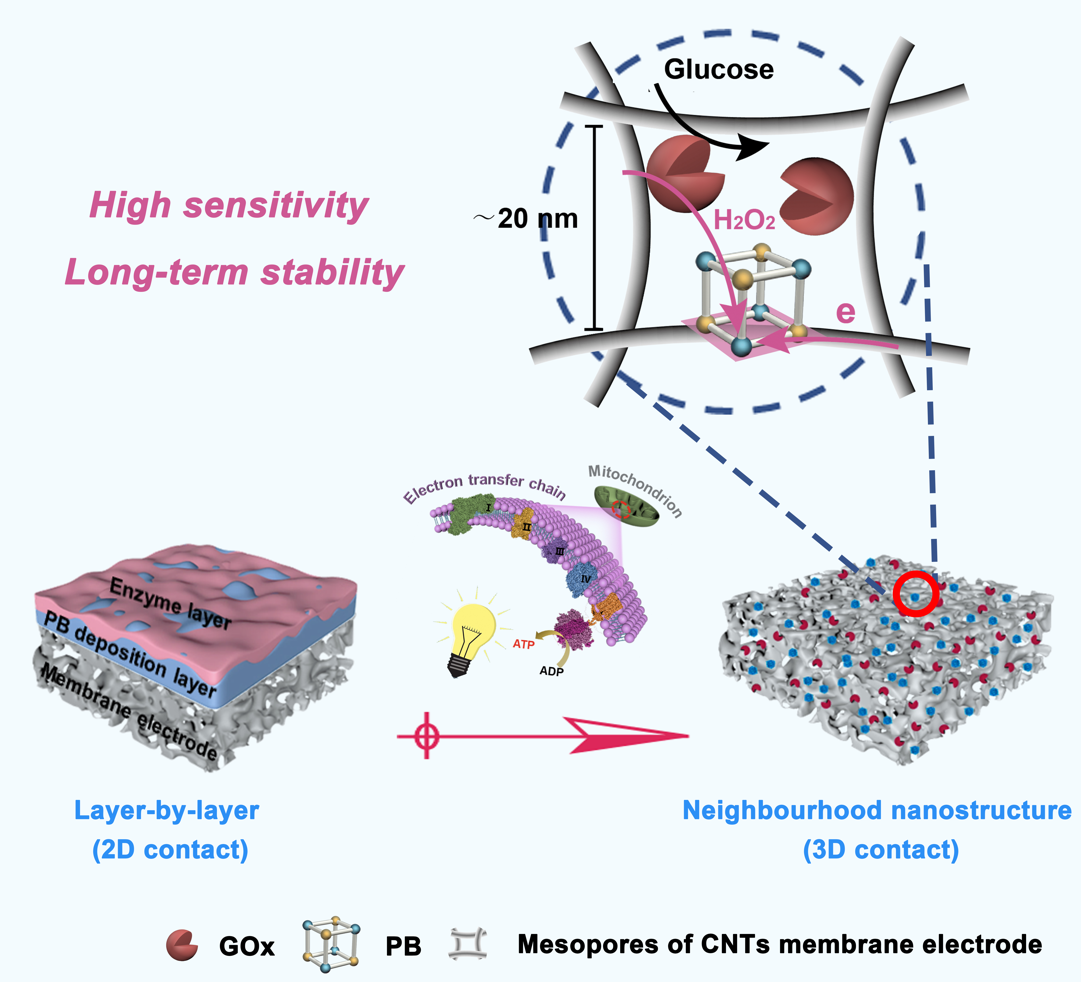
Schematic diagram of developing 3D mesoporous biosensing-membrane with neighborhood nanostructures as inspired by the structure of cytomembrane. Image Credit Hao Zhang
The glucose oxidase/electrocatalysts or electrode (GOx/ECs/electrode) cascade system act as the core part of most glucose biosensing devices (both invasive and non-invasive). But the patterned assembly of such cascade sensing units remains difficult, thus restricting the attainment of long-term stability and high sensitivity.
Having been motivated by the structure of electron-transfer chains present in the mitochondria, a research group headed by Professor Yinhua Wan from the Institute of Process Engineering (IPE) of the Chinese Academy of Sciences has come up with a three-dimensional (3D) mesoporous biosensing-membrane along with neighborhood nanostructures that exhibits long-term stability and outstanding sensitivity.
The study was reported in the Advanced Functional Materials journal on June 13th, 2023.
For the biosensing membranes to be made, the scientists made use of tannic acid-3-aminopropyltriethoxysilane-Fe3+ (TA-APTES-Fe) ternary coating to correctly assemble and adjacently restrict Prussian blue (PB) and GOx in the 3D mesoporous carbon nanotube (CNT) membrane electrode.
This strategy enhances the cascade sensing units with close proximity and extends the triple-phase boundary (TPB) from conventional 2D contact to 3D contact, which boosts the cascade reaction efficiency, improves the accessibility and availability of H2O2 toward the TPB, and increases the utilization of PB.
Jianquan Luo, Professor, Institute of Process Engineering, Chinese Academy of Sciences
Furthermore, the PB and GOx have been stabilized by the spatially confined microenvironment. Also, the separation function of the CNT membrane steps up the sensing stability by in-situ elimination of interferents from the analytes.
Good sensitivity and long-term stability have been displayed by the as-prepared mesoporous biosensing membrane having a negligible response drift for up to eight hours, thus surpassing the reported outcomes.
The multienzyme mimic functions of PB have been employed to imitate the ‘loosening-degradation’ membrane cleaning process, fully regenerating the fouled biosensing-membrane.
Yinhua Wan, Professor, Institute of Process Engineering, Chinese Academy of Sciences
This work offers an operation strategy and novel design for biosensors, thereby guaranteeing efficient, trustworthy, and stable sensing.
Journal Reference
Song, S., et al. (2023) 3D Neighborhood Nanostructure Reinforces Biosensing Membrane. Advanced Functional Materials. doi.org/10.1002/adfm.202303313.